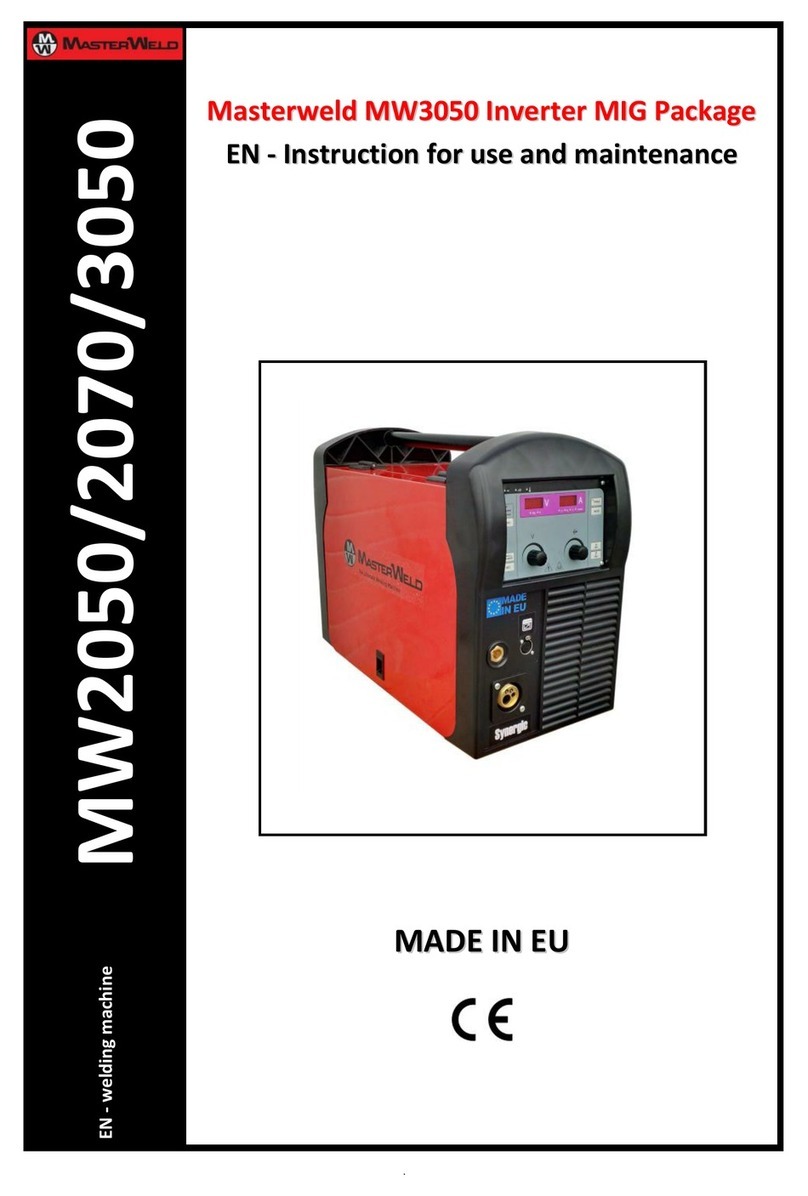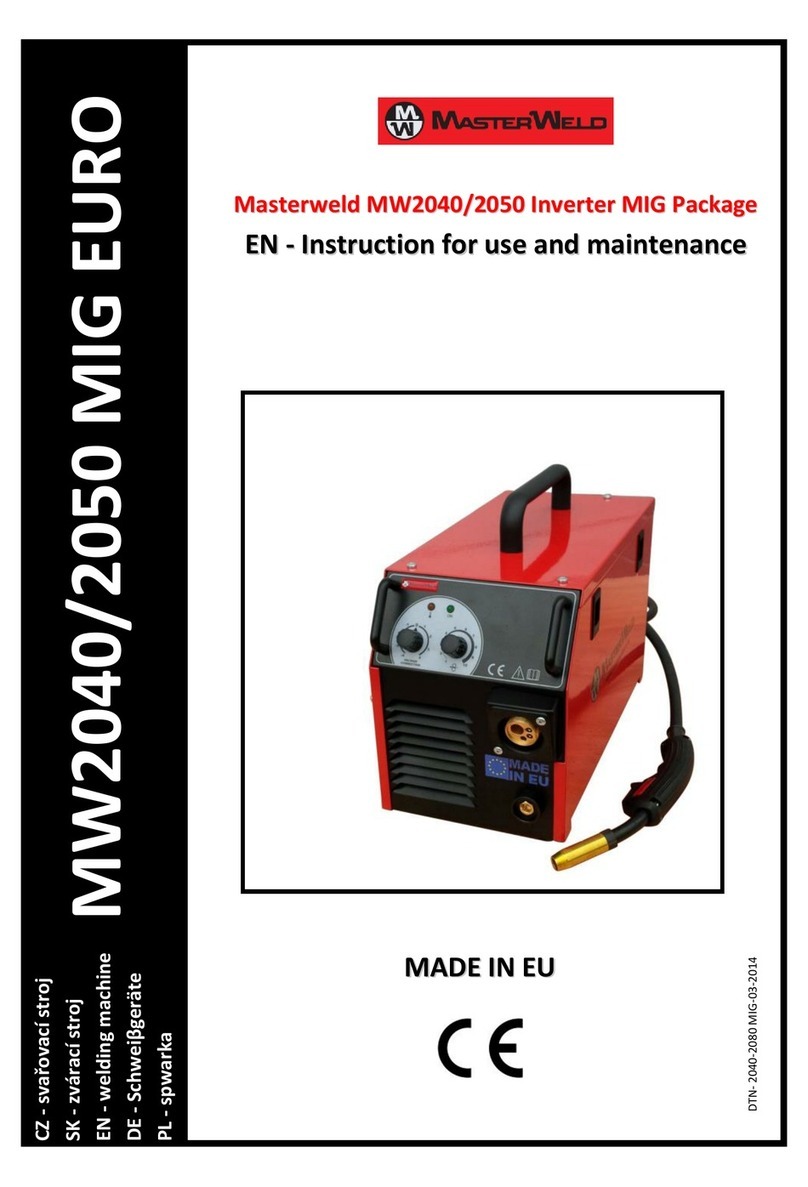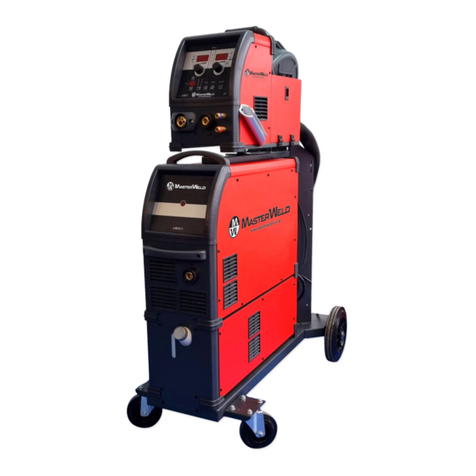Electrical supply
This machine must be connected to the electricity supply by a competent person
Make sure this unit is connected to the correct supply voltage marked on the rear. This is normally
110v, but others are also available.
This unit must be earthed. This is the green/yellow conductor. The other two are normally blue &
brown, the blue one is neutral & brown is live, they may also be both black in which case these are
not polarity conscious.
If in doubt consult a qualified electrician.
Using the Masterweld MWT3000-E Feeder with AWT300 Torch
Make sure the unit is correctly connected to the tig power source and power supplies etc. see above.
It is important to make sure that you have a very straight first few inches of wire before you start to
feed. The wire tensioner must be set so as not to crush the wire and just provide enough tension to
feed the wire reliably. The wire can be inched down the torch liner by the switch on the front panel.
The torch must be kept very straight when initially feeding the wire down to the head.
Sensitivity control & range switch –located within the MWT3000-E Feeder
The sensitivity knob also controls the start and stop of wire, this is located within the MW3000
Feeder. The sensitivity control always needs to be set below the actual welding amperage. Otherwise
the wire will never feed. The sensitivity control allows you to set the level of welding current that you
want the feed to start and stop at. So, for instance if you are welding at 200 amps and have some
slope down time pre-set on the power source, then if you set the sensitivity time at say 150 amps, the
feed will stop during the slope time at around 150 amps. This control is very useful for controlling the
start and stop during slope time.
The range switch alters the sensitivity control to give a 15-200A range or a 15-300A range.
This gives the operator better control of the sensitivity particularly on lower current.
Therefore, if welding below 200A we recommend setting the switch to the low range.
Note: values marked for sensitivity are only approximate.
Auto retract –located within the MWT3000-E Feeder
The auto retract reverses the wire drive to pull the wire out of the welding pool when the welding
current falls below that set on the sensitivity control. This function also works when pulsing the
welding current. However if auto retract is set too high when pulsing, the wire may be trying to retract
more than driving forward which will result in no wire feeding into the pool.





























